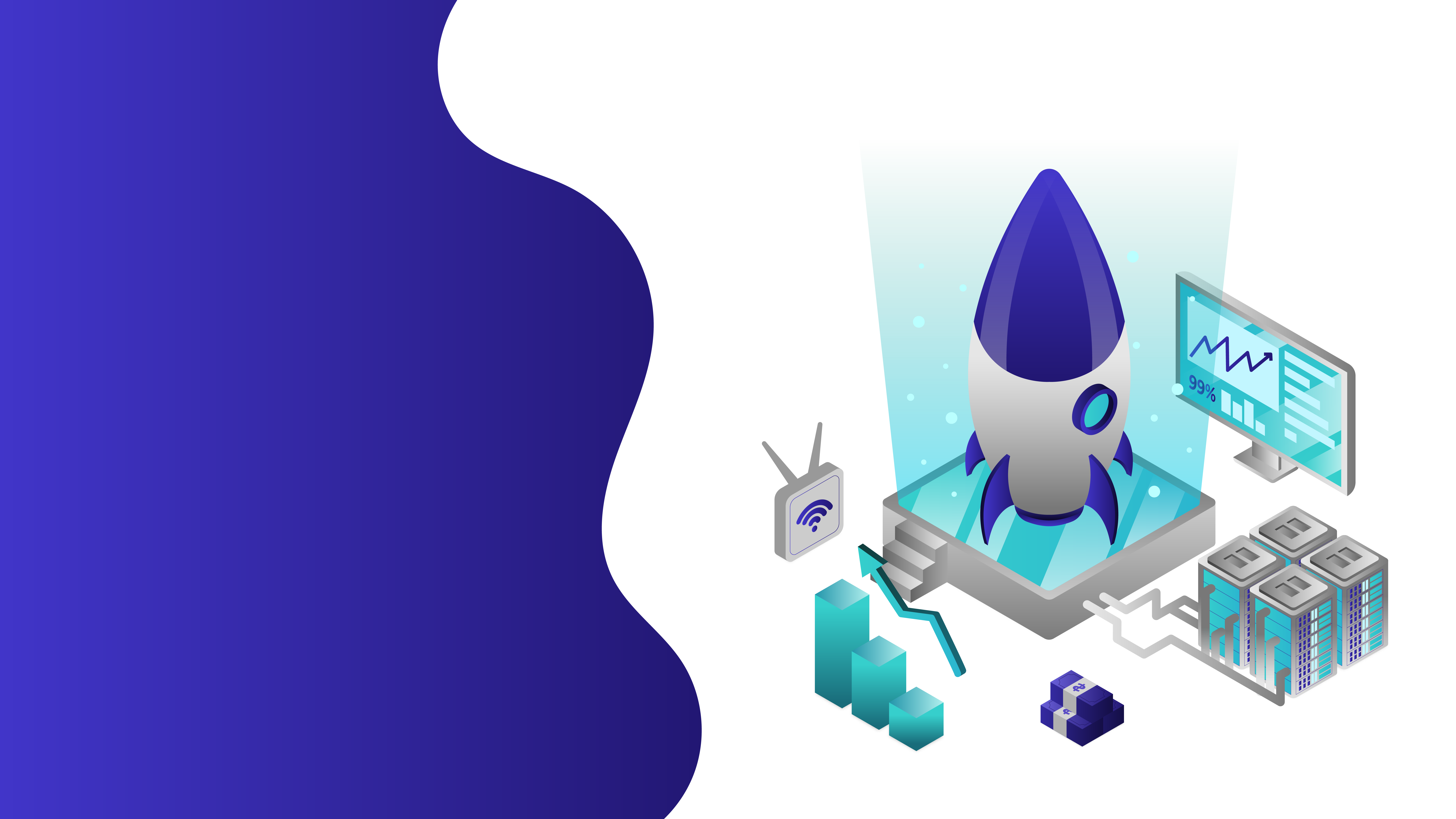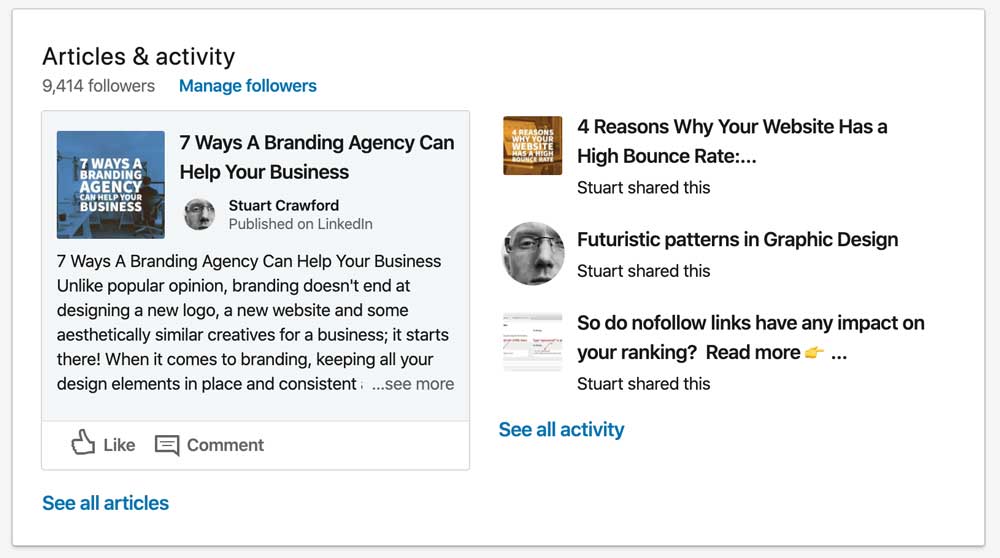
20 Feb How to Build a Personal Brand on LinkedIn in 2020
How to Build a Personal Brand on LinkedIn in 2020
Gaining followers and connections on LinkedIn works differently from other social media platforms.
For instance, 90,000 followers and 30,000 connections won’t even get you “influencer” status on Instagram, but it’s pretty impressive on LinkedIn.
Why would you want to grow your personal brand on LinkedIn?
For one, the people who use it are those who could make or break your career.
You can find the CEO of a Fortune 500 company as quickly as you can see that high school football teammate who threw you a Hail Mary pass in your last football game.
LinkedIn is primarily a B2B platform, which means you can get connected to businesses and the people who run them.
Your next job can come from the last recruiter you connected with.
You can also learn about what’s going on in your chosen field even before you find the same news on Facebook.
In other words, building your brand on LinkedIn opens up opportunities for career growth and personal development.
Here are some standard practices observed by highly successful LinkedIn members.
Stop caring about gaining followers

It might seem counterintuitive to see this type of advice in an article about building your personal brand, but LinkedIn users are a different crowd.
What works on Facebook is the exact opposite of what works on LinkedIn.
Here are some reasons you shouldn’t care about getting more followers:
- They don’t care about personal appearance – That selfie you took at your company’s 2020 kick-off party isn’t going to get you new followers. People are more inclined just to ignore your photos and move on to other users who post different types of content.
- They don’t care about “branding” – Am I the only one who finds the concept of “branding,” as applied to individuals, a bit superficial? While Instagram users go on and on about building their personal brands, LinkedIn users avoid them like the plague. It’s more about what you do, not about what you claim to be. When you launch a personal brand, try to remain authentic to yourself.
- They don’t want to hear about your products – If promoting your business is the primary reason you want to gain followers, you are doing it wrong. Your business should have its own LinkedIn page where it could post product updates, promotions, and company news. An update about your company’s new timesheet app should appear on your company page, not your personal account.
Post everyday
Consistency is vital when it comes to building a business.
It also applies to building your personal brand on LinkedIn.
People on LinkedIn associate consistency with commitment. If you are not consistent, you have little credibility.
Credibility is the most valuable currency you can have on a social platform like LinkedIn.
(Arianna Huffington, who has more than 8 million followers, posts at least twice or thrice a day.)
If you post only once a month, you don’t find and establish your voice.
LinkedIn users turn to the app or site for career or personal advice.
If you don’t post more frequently, they won’t be able to find your posts, even if they have the potential to change lives.
Find something to post about every day.
People will see how serious you are.
Then they’ll become serious about following you — all because you choose to be serious about posting relevant content daily.
Stop trying to sell yourself
LinkedIn is great for finding clients.
However, studies show that self-promoting posts get 50% fewer likes compared to those that don’t self-promote.
This shows that LinkedIn users are averse to other users with oversized egos.
Some of the more common self-promoting practices on LinkedIn include:
- Promoting one’s self as some sort of disruptor or influencer – LinkedIn users can detect bull from a mile away. You wouldn’t want to be that person who claims to be a disruptor, then gets shown up when a real disruptor or influencer decides not to engage with you. It just reeks of desperation.
- Promoting one’s business without considering the context – If you’re looking to engage with other companies, you won’t get that engagement if you just show up in random comment sections with a link to your company’s LinkedIn page.
- Starting content with a call to action – LinkedIn content should take a cue from landing pages. They introduce their products and concepts first, then tell you how you could benefit from engaging with you, then end with calls to action. Sadly, many posts on LinkedIn do the reverse. They get the lowest engagement.
The three don’ts above apply to both personal and business accounts. Don’t wear out your welcome. Engage meaningfully.
Help other LinkedIn users in your own little way
LinkedIn is a community. Like people in other communities, LinkedIn users appreciate little acts of kindness.
Two LinkedIn users who contribute in their own ways are Brigette Hyacinth and Oleg Vishnepolsky.
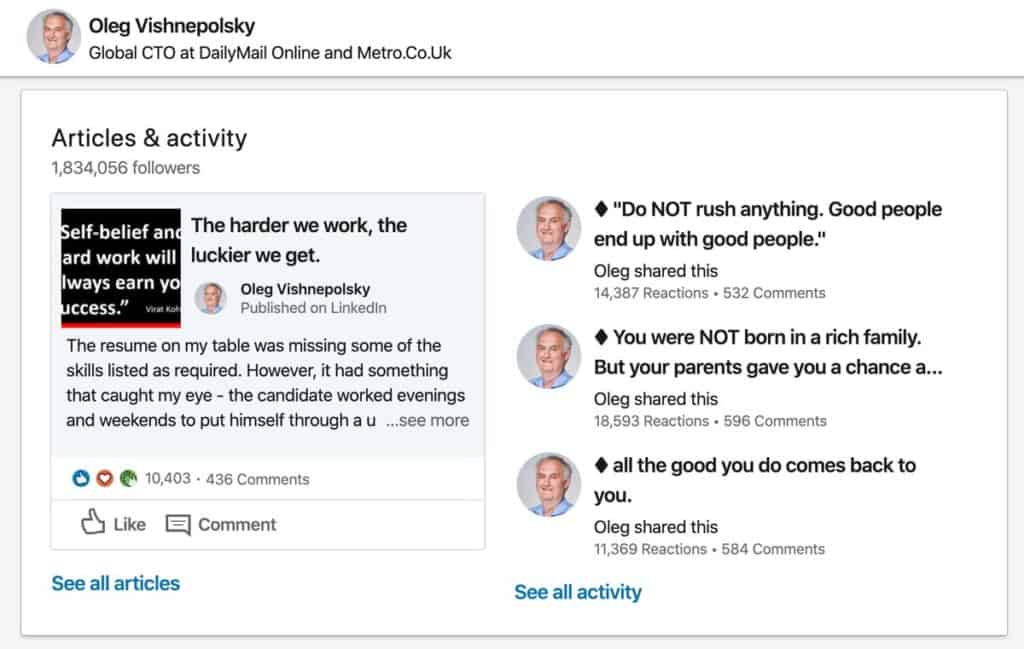
Brigette, an author who writes about leadership and automation, and Oleg, the CTO at the Daily Mail, are influencers in their own right.
Still, a lot of their engagement comes from their interactions with other LinkedIn users.
For example, when someone in their feed posts about looking for a job, they comment on the post.
This engagement gives the post much valuable visibility to recruiters or hiring managers.
I don’t know the exact number of people that they helped with their careers using this little act of kindness, but I’m estimating it must be in the thousands.
Even if you don’t have the influence that Brigette and Oleg possess, you can still help the community in other ways.
You can share your experience and expertise in industry groups, or send a direct message to someone who expresses curiosity about your field.
This is a great way to make connections as a small business or freelancer.
Be mindful about your content
A good story with relatable content is practically useless if the presentation is rubbish.
You hardly see anyone posting content with a lot of emojis or hashtags on LinkedIn. This makes sense because of two things:
- Around 60% of LinkedIn users fall between 30 to 64 years old – They are more often than not CEOs, senior-level executives, or middle managers. They know that the best way to get messages across is to keep it clean and simple. This is why they stick to simple text with minimal images.
- LinkedIn’s hashtag function works differently – While hashtags can help boost a post’s engagement, most LinkedIn users usually limit hashtags to a maximum of five per post. Using too many hashtags can result in the LinkedIn algorithm marking a post as spam.
Using emojis or hashtags that have little to do with your message will cheapen and dilute your content and erode your personal brand. Stick to your message.
Be selfless and real
The one trait that most people with large numbers of LinkedIn followers have in common is selflessness.
They might be very busy with their business.
Still, they find ways to reply to personal messages and engage with their followers on their posts.
This is not to say that their egos are non-existent.
It’s just that their egos, their accomplishments, and their titles are not screaming at you right out of the screen. They are not out to sell something to their followers right away.
Instead, they share relevant content, provide something of value to the discussion, and don’t turn away followers.
They consider every interaction an opportunity to teach and to be taught.
Vulnerability also works in small doses.
While you’d think that LinkedIn is mainly for business networking, it is, after all, a social network.
As such, an admission that you don’t know everything could be the start of a fruitful conversation with your followers.
Tell a story
LinkedIn users can tell right away if you are trying to push a product or agenda on them.
However, this doesn’t mean you shouldn’t post your opinions about a service or promote your products.
You just have to do it the right way.
Most people love a good story. A good story is something that they can relate to.
For example, you can tell about how an initial encounter with a boss didn’t go well.
You can also tell about how an incident changed your perception of that boss and made them seem more human to you.
This type of story resonates with so many people, whether or not they are on LinkedIn.
Everyone has worked with a manager who seemed impenetrable at first but later proved to be fair and empathetic.
Other people can also relate to the manager, having been in the same situation of balancing professionalism and empathy.
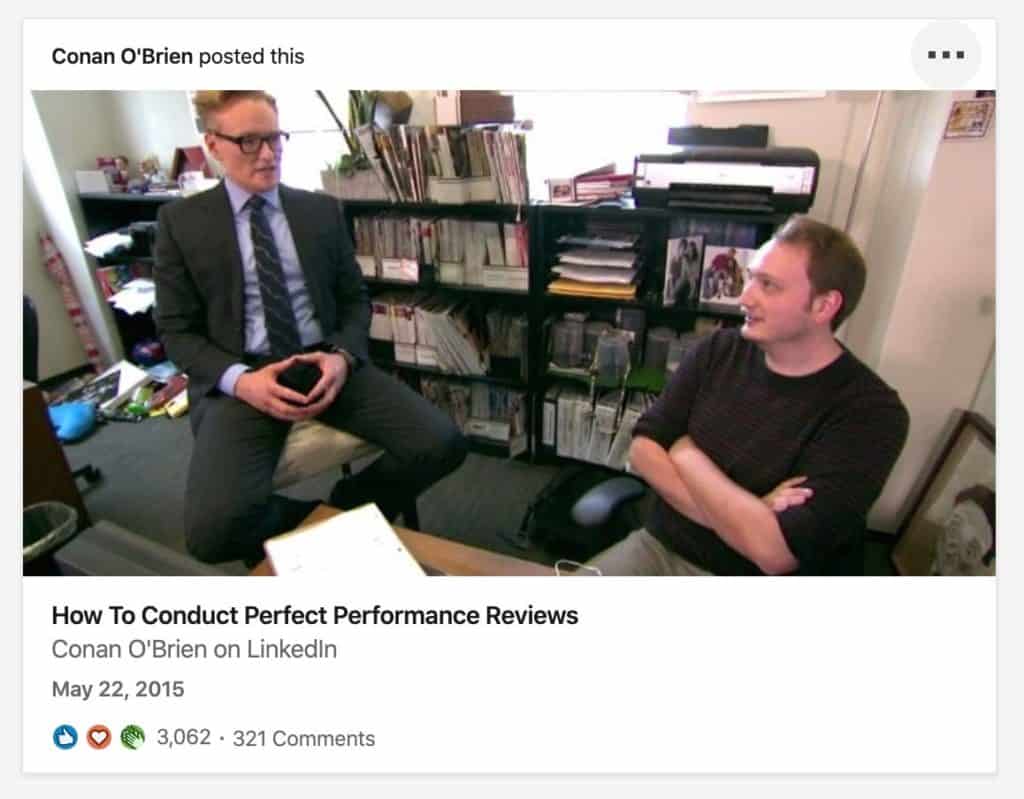
A good story is worth thousands of likes and shares.
Keep it real and express it in the most straightforward, the most transparent way you can imagine. A little bit of humour never hurts either.
Building a Brand on LinkedIn
As paradoxical as it may seem, you build a personal brand on LinkedIn by not making a brand.
LinkedIn users are smart enough to distinguish what’s real from what’s merely manufactured.
They will not hesitate to click the “unfollow” button the moment they sense something isn’t right.
Instead of adopting strategies from other social networks, you’ll have more success with posting relevant content that doesn’t sound like it’s selling something.
This shows confidence in both yourself and the organisation that you represent.
Remember, the way you present yourself on LinkedIn reflects the way you present yourself in a job interview or in front of a crowd of CEOs.
Use LinkedIn properly, and there’s no telling where your personal brand, or lack of one, will take you.
Author Bio: Owen Jones is the Senior Content Marketer at Zoomshift, an online schedule maker app. He is an experienced SaaS marketer, specializing in content marketing, CRO, and FB advertising.
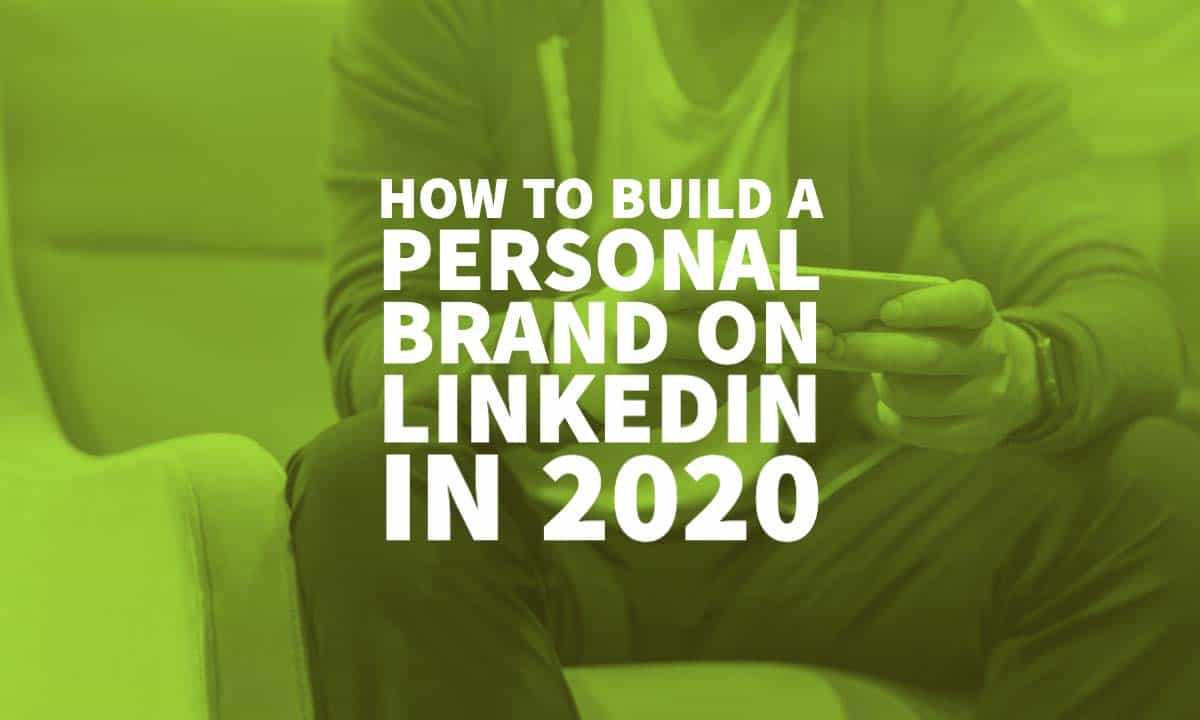
The post How to Build a Personal Brand on LinkedIn in 2020 is by Stuart and appeared first on Inkbot Design.


